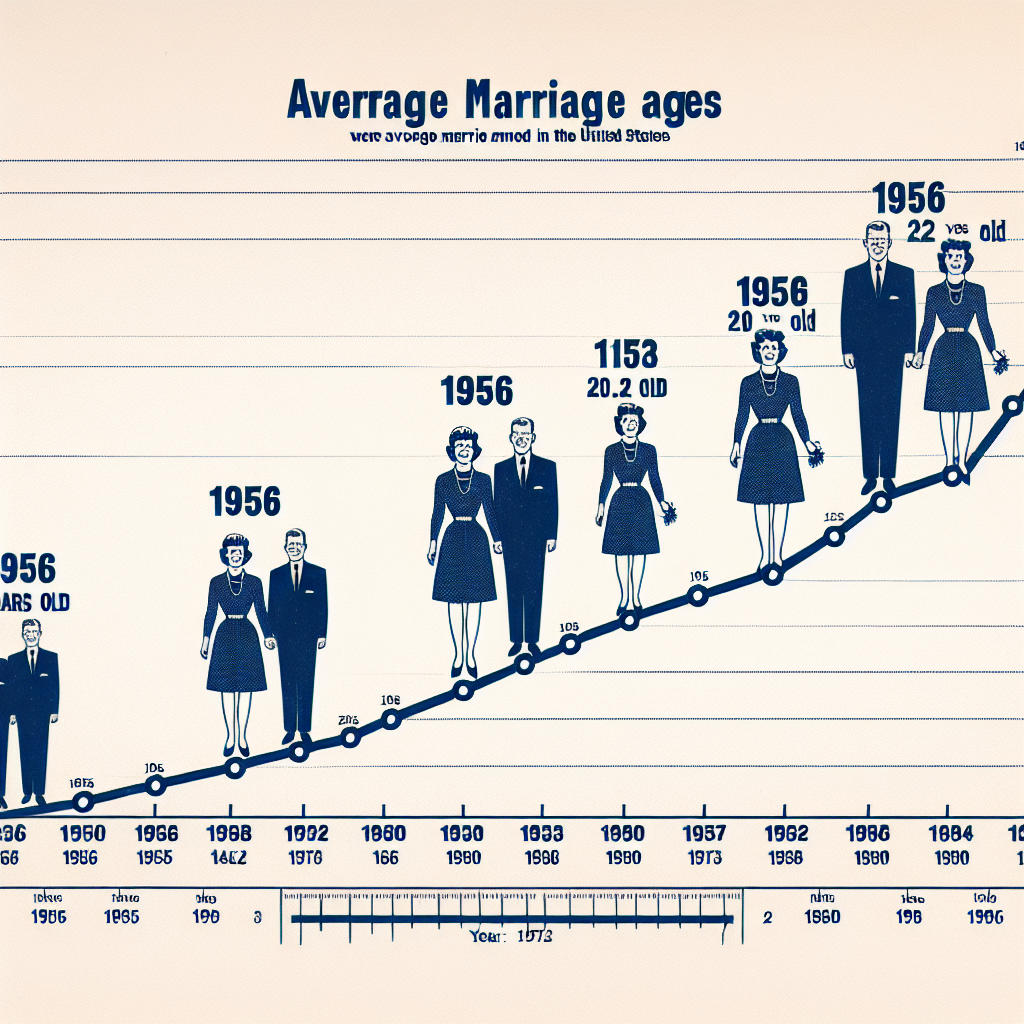According to data from the U.S. Census Bureau, the average age at which newlyweds in the United States get married has been increasing over the past few decades. From 1956 when men were marrying at 22.5 years old and women at 20.1 years old, the average age has risen to 30.2 years old for men and 28.4 years old for women in 2023, an increase of 8 years.
As marriage transitions from being the “cornerstone” of life to the “capstone,” the phenomenon of delaying marriage is becoming increasingly common, indicating that the difficulty of getting married has significantly increased.
The 2023 census data revealed that the four states with the highest average marriage age are New York (31.4 years old), Massachusetts (31.3 years old), California (31.2 years old), and Connecticut (31.1 years old).
Utah has the lowest average age for newlyweds, with men at 26.8 years old and women at 25.2 years old, making it the only state with an overall average age of 26 years old.
Other states with relatively lower overall average marriage ages include Idaho (27 years old), South Dakota (27.1 years old), Arkansas (27.1 years old), Kentucky (27.1 years old), West Virginia (27.1 years old), and Oklahoma (27.2 years old).
It’s worth noting that in nearly all states, the average age for men at marriage is higher than that for women, with some states showing a difference of around 5 years. For example, in Hawaii, the average age for men at marriage is 32.5 years old, while for women it is 27.1 years old.
In South Dakota, this difference is minimal, with men marrying at 27.2 years old and women at 27 years old.
The census report shows that Mississippi is the state where women have a higher average marriage age, with men marrying on average at 27.6 years old and women at 28.2 years old.
In the face of the phenomenon of increasing average marriage ages across all states in the U.S., people have differing reactions.
Some hold a pessimistic view, believing that society is facing issues where young people are not necessarily choosing to delay marriage voluntarily. Many graduates still carry student debt post-graduation or struggle to find stable employment, making marriage seem unattainable.
On the other hand, some hold an optimistic view, suggesting that marrying later has its benefits, leading to more stable and secure families.
At Bowling Green State University in Ohio, family and population expert Susan L. Brown stated to Newsweek, “Overall, delaying the age of first marriage is often associated with increased marriage stability.”
Conservatives, on the other hand, argue that the changing age of marriage reflects shifts in cultural traditions, with young people moving away from tradition, weakening the sanctity and sense of duty within marriage.
The Trump administration is concerned about the historically low birth rates in the U.S., believing that delaying marriage will inevitably lead to delayed childbirth, impacting the overall birth rate.
In response, the Trump administration has been actively promoting healthy marriages and supporting young families in embracing traditional values.
Last month, the Department of Health and Human Services announced over $100 million in funding through the Administration for Children and Families (ACF) for 38 states and 109 organizations under the “Healthy Marriage” and “Responsible Fatherhood” programs.
The administration has even taken incentivizing measures, directing the Department of Transportation to prioritize communities with higher birth and marriage rates to help individuals marry and start families sooner.
(Reference: Adapted from Newsweek)

